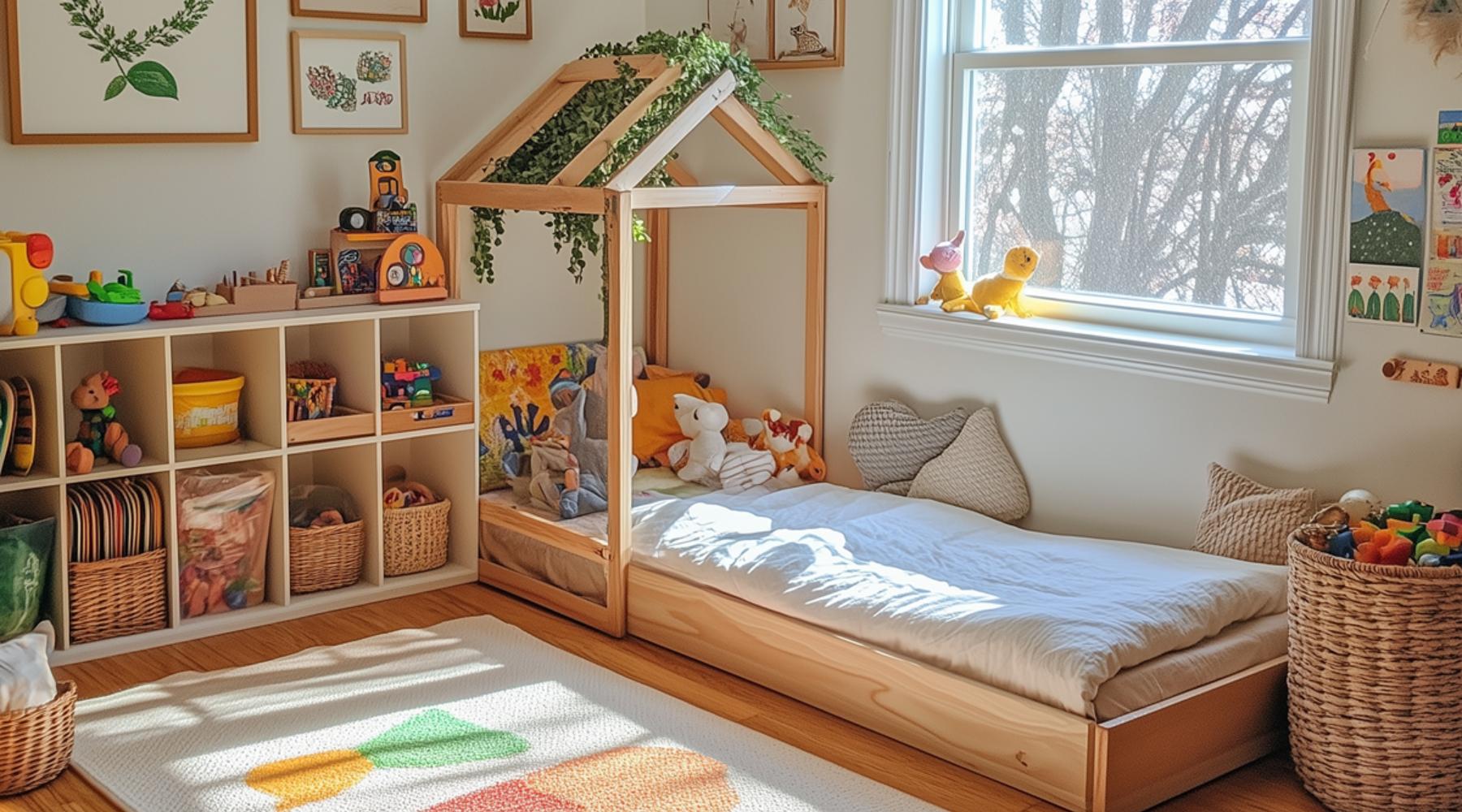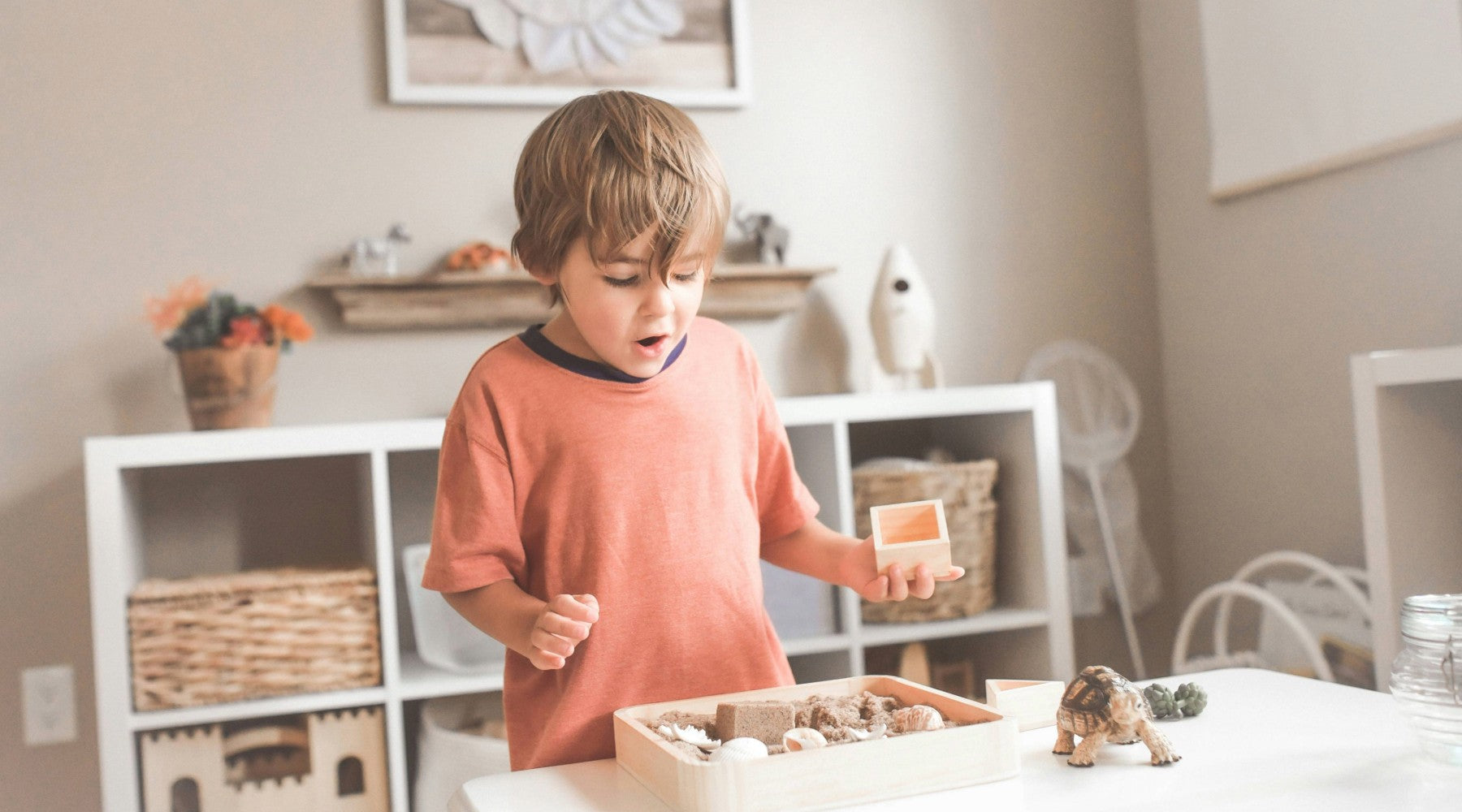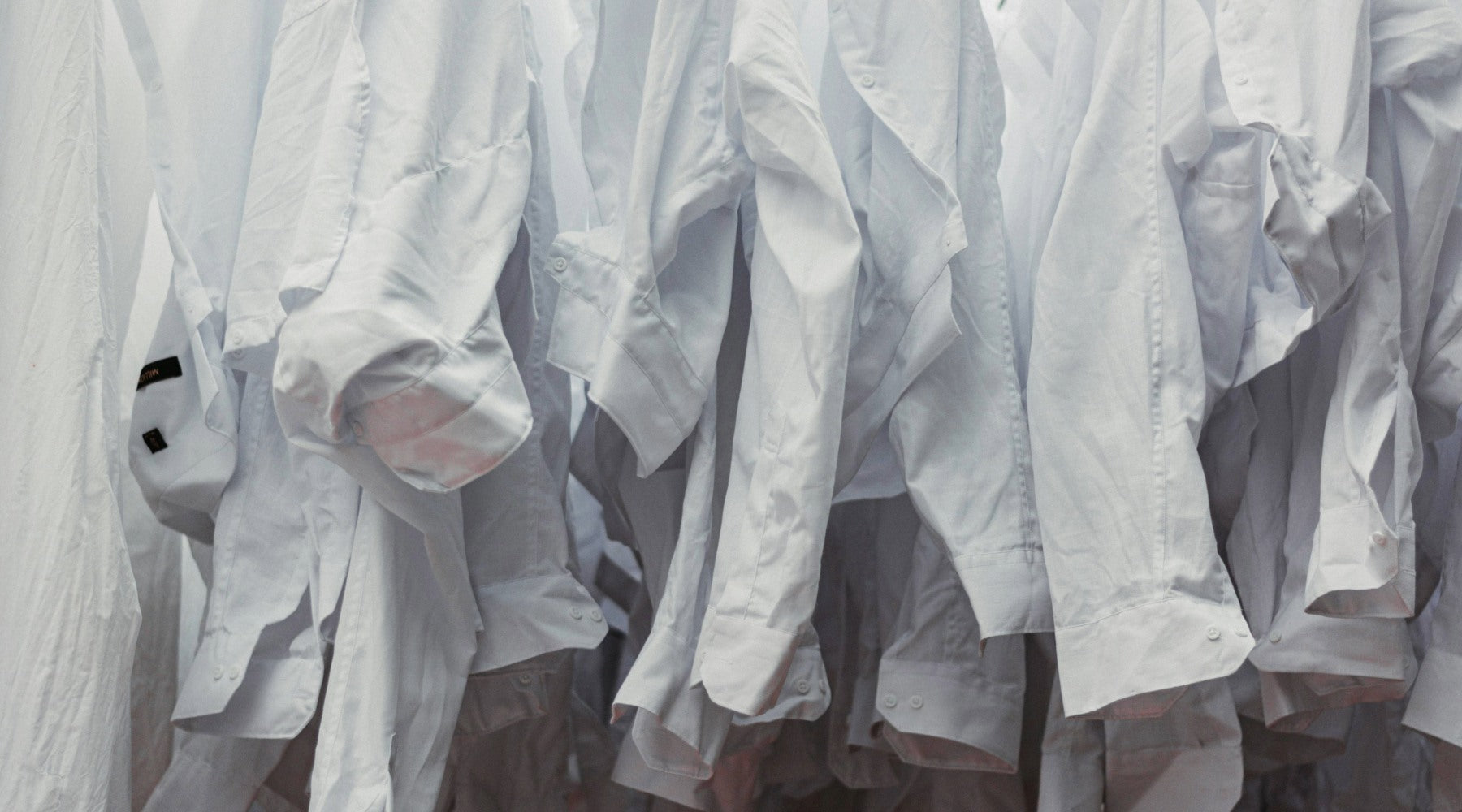How To Design a Montessori Bedroom For Your Toddler
Creating a Montessori-inspired bedroom for your toddler can be a rewarding project that fosters independence, creativity, and a love for learning. This guide will walk you through the essentials of setting up a Montessori bedroom, answering some of the most frequently asked questions along the way.
What is a Montessori Bedroom?
A Montessori bedroom is designed to promote independence and learning through exploration. It’s a space where everything is within a child's reach, encouraging them to interact with their environment freely and safely. The room typically includes child-sized furniture, open shelves with accessible toys and materials, and areas designated for different activities.
Key Elements of a Montessori Bedroom
Child-Sized Furniture: Use low tables and chairs, shelves, and a bed that your toddler can easily get in and out of. This setup supports independence and makes it easier for your child to move around and access their belongings.
- Accessible Storage: Open shelves and baskets at your child's height allow them to choose and put away their toys and materials independently. This teaches organization and responsibility.
- Natural Materials: Opt for toys and furniture made from natural materials like wood, cotton, and wool. These materials are not only more durable but also provide a more sensory-rich experience compared to plastic.
- Learning Stations: Create specific areas for different activities, such as reading, building, and art. This helps your child focus on one activity at a time and keeps the room organized.
- Minimalist Design: Keep the room clutter-free with a minimalist design. Too many toys and distractions can overwhelm a child. Instead, rotate toys and materials to keep their environment fresh and engaging.
Frequently Asked Questions
Ready to create a beautiful, functional Montessori bedroom for your little one? Awesome! You probably have some questions about floor beds, toy shelves, and the whole setup. Below are answers to the most common questions I get. Let's dive in!
Q1: What type of bed should I use in a Montessori bedroom?
A Montessori bed is typically a floor bed or a low bed that allows the child to get in and out independently. This design encourages freedom of movement and promotes better sleep habits by giving the child control over their sleeping environment.
Q2: How do I choose Montessori toys?
Montessori toys are designed to encourage learning through play. Look for toys that are simple, made (ideally) from natural materials, and support developmental skills such as fine and gross motor skills, problem-solving, sensory exploration and teach practical skills. They are also open-ended, meaning they can be used in multiple ways and grow with the child as their abilities and interests evolve.
Q3: How can I create a Montessori learning environment at home?
Start by setting up different activity stations, such as a reading nook with a small bookshelf and comfortable seating, an art station with accessible supplies, and a play area with open-ended toys. Ensure everything is at your child's height and easily accessible.
Q4: What colors should I use in a Montessori room?
Montessori environments often use neutral and natural colors to create a calm and inviting atmosphere. Soft blues, greens, and earthy tones are ideal. You can add pops of color through toys, books, and artwork to stimulate interest without overwhelming the senses.
Q5: How can I encourage my child to clean up after themselves?
Most children are capable of cleaning up after themselves by 18 months, but children can be increasingly independent with age and practice. Incorporate cleaning into the daily routine by making it a fun and engaging activity. For the smallest ones, start with dusting a section of furniture.
Spray a section of furniture, or give him a damp cloth, and let him wipe away with you as you dust your furniture. Create a designated spot for each item and encourage your child to put things back after use. Give your child time to comply, and repeat yourself only once. Consistency and positive reinforcement are key.
Q6: Can I incorporate Montessori principles if I have limited space?
Absolutely! Even in a small space, you can apply Montessori principles by ensuring your child's belongings are within reach, using multi-functional furniture, and keeping the environment organized and clutter-free. Focus on quality over quantity when it comes to toys and materials.
Final Thoughts on Setting Up a Montessori Bedroom
Setting up a Montessori room for your toddler is a thoughtful way to support their development and independence. By carefully selecting furniture, toys, and materials, you can create an environment that fosters curiosity, learning, and a sense of responsibility. Remember, the goal is to create a space that's adapted to your child's needs and interests.
Looking for a Recipe? Search here!

Hey there! So… who even am I, and why should you trust me? I’m Tamara—just a girl trying to live her happiest, healthiest life.
After years of traveling the world as a digital nomad (with everything I owned in two suitcases), I discovered that a sustainable lifestyle gave me so much freedom and joy. I eat better food, I own fewer but better things, and this mindset helped me stay sane—especially after becoming a parent. I love my life and my daughter deeply, and that’s a big part of why I live low waste too: to respect the generations to come and do my part for a better tomorrow.
This little corner of the internet is a reflection of that journey—where I share what’s truly worked for me and what I genuinely use and love in my own life. So glad you're here!




Leave a comment
This site is protected by hCaptcha and the hCaptcha Privacy Policy and Terms of Service apply.